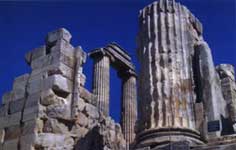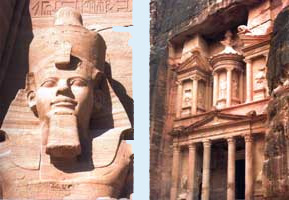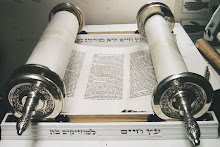Secular history gives much evidence to show that the survivors of Noah’s Flood were real historical figures, whose names were indelibly carved on much of the ancient world …

Ruins in Turkey. There is evidence suggesting that this country’s name is derived from that of Noah’s descendant Togarmah (see text).
When Noah and his family stepped out of the Ark, they were the only people on Earth. It fell to Noah’s three sons, Shem, Ham, and Japheth, and their wives, to repopulate the Earth through the children that were born to them after the Flood. Of Noah’s grandchildren, 16 grandsons are named in Genesis chapter 10.
God has left us ample evidence to confirm that these 16 grandsons of Noah really lived, that the names the Bible gives were their exact names, and that after the Babel dispersion (Genesis 11) their descendants fanned out over the earth and established the various nations of the ancient world.
The first generations after the Flood lived to be very old, with some men outliving their children, grandchildren, and great-grandchildren. This set them apart. The 16 grandsons of Noah were the heads of their family clans, which became large populations in their respective areas. Several things happened:
-
People in various areas called themselves by the name of the man who was their common ancestor.
-
They called their land, and often their major city and major river, by his name.
-
Sometimes the various nations fell off into ancestor worship. When this happened, it was natural for them to name their god after the man who was ancestor of all of them, or to claim their long-living ancestor as their god.
All of this means that the evidence has been preserved in a way that can never be lost, and all the ingenuity of man cannot erase. We will now examine it.
The seven sons of Japheth
Genesis 10:1–2 reads:
‘Now these are the generations of the sons of Noah, Shem, Ham, and Japheth: and unto them were sons born after the flood. The sons of Japheth; Gomer, and Magog, and Madai, and Javan, and Tubal, and Meshech, and Tiras.’
The first of Noah’s grandsons mentioned is Gomer. Ezekiel locates the early descendants of Gomer, along with Togarmah (a son of Gomer), in the north quarters (Ezekiel 38:6). In modern Turkey is an area which in New Testament times was called Galatia. The Jewish historian Flavius Josephus records that the people who were called Galatians or Gauls in his day (c. AD 93) were previously called Gomerites.1
They migrated westward to what are now called France and Spain. For many centuries France was called Gaul, after the descendants of Gomer. North-west Spain is called Galicia to this day.
| Great empires of the past: Egypt, Assyria, Babylon, and Persia all have strong historical links to the Biblical figures connected with the sons of Noah. Most, if not all, tribes and nations can be traced to these men through their descendants.  A huge carved statue of the great pharaoh Ramesses II of Egypt (left). Ruins from the ancient Nabatean city of Petra (right). |
Some of the Gomerites migrated further to what is now called Wales. The Welsh historian, Davis, records a traditional Welsh belief that the descendants of Gomer ‘landed on the Isle of Britain from France, about three hundred years after the flood’.2 He also records that the Welsh language is called Gomeraeg (after their ancestor Gomer).
Other members of their clan settled along the way, including in Armenia. The sons of Gomer were ‘Ashkenaz, and Riphath, and Togarmah’ (Genesis 10:3). Encyclopaedia Britannica says that the Armenians traditionally claim to be descended from Togarmah and Ashkenaz.3 Ancient Armenia reached into Turkey. The name Turkey probably comes from Togarmah. Others of them migrated to Germany. Ashkenaz is the Hebrew word for Germany.
The next grandson mentioned is Magog. According to Ezekiel, Magog lived in the north parts (Ezekiel 38:15, 39:2). Josephus records that those whom he called Magogites, the Greeks called Scythians.1 According to Encyclopaedia Britannica, the ancient name for the region which now includes part of Romania and the Ukraine was Scythia.4
The next grandson is Madai. Along with Shem’s son Elam, Madai is the ancestor of our modern-day Iranians. Josephus says that the descendants of Madai were called Medes by the Greeks.1 Every time the Medes are mentioned in the Old Testament, the word used is the Hebrew word Madai (maday). After the time of Cyrus, the Medes are always (with one exception) mentioned along with the Persians. They became one kingdom with one law—‘the law of the Medes and Persians’ (Daniel 6:8, 12, 15). Later they were simply called Persians. Since 1935 they have called their country Iran. The Medes also ‘settled India’.5
The name of the next grandson, Javan, is the Hebrew word for Greece. Greece, Grecia, or Grecians appears five times in the Old Testament, and is always the Hebrew word Javan. Daniel refers to ‘the king of Grecia’ (Daniel 8:21), literally ‘the king of Javan’. Javan’s sons were Elishah, Tarshish, Kittim, and Dodanim (Genesis 10:4), all of whom have connections with the Greek people. The Elysians (an ancient Greek people) obviously received their name from Elishah. Tarshish or Tarsus was located in the region of Cilicia (modern Turkey).
Encyclopaedia Britannica says that Kittim is the biblical name for Cyprus.6 The people who initially settled around the area of Troy worshipped Jupiter under the name of Jupiter Dodonaeus, possibly a reference to the fourth son of Javan, with Jupiter a derivative of Japheth. His oracle was at Dodena. The Greeks worshipped this god but called him Zeus.
Next is Tubal. Ezekiel mentions him along with Gog and Meshech (Ezekiel 39:1). Tiglath-pileser I, king of Assyria in about 1100 BC, refers to the descendants of Tubal as the Tabali. Josephus recorded their name as the Thobelites, who were later known as Iberes.1
‘Their land, in Josephus’ day, was called by the Romans Iberia, and covered what is now (the former Soviet State of) Georgia whose capital to this day bears the name Tubal as Tbilisi. From here, having crossed the Caucasus mountains, this people migrated due north-east, giving their tribal name to the river Tobol, and hence to the famous city of Tobolsk.’7
Meshech, the name of the next grandson, is the ancient name for Moscow. Moscow is both the capital of Russia, and the region that surrounds the city. To this day, one section, the Meschera Lowland, still carries the name of Meshech, virtually unchanged by the ages.
According to Josephus, the descendants of grandson Tiras were called Thirasians. The Greeks changed their name to Thracians.1 Thrace reached from Macedonia on the south to the Danube River on the north to the Black Sea on the east. It took in much of what became Yugoslavia. World Book Encyclopaedia says: ‘The people of Thrace were savage Indo-Europeans, who liked warfare and looting.’8 Tiras was worshipped by his descendants as Thuras, or Thor, the god of thunder.
The four sons of Ham
Next we come to the sons of Ham: Cush, Mizraim, Phut, and Canaan (Genesis 10:6).
The descendants of Ham live mainly in south-west Asia and Africa. The Bible often refers to Africa as the land of Ham (Psalms 105:23,27; 106:22). The name of Noah’s grandson Cush is the Hebrew word for old Ethiopia (from Aswan south to Khartoum). Without exception, the word Ethiopia in the English Bible is always a translation of the Hebrew word Cush. Josephus rendered the name as Chus, and says that the Ethiopians ‘are even at this day, both by themselves and by all men in Asia, called Chusites’.9
Noah’s next grandson mentioned was Mizraim. Mizraim is the Hebrew word for Egypt. The name Egypt appears hundreds of times in the Old Testament and (with one exception) is always a translation of the word Mizraim. E.g. at the burial of Jacob, the Canaanites observed the mourning of the Egyptians and so called the place Abel Mizraim (Genesis 50:11).
Phut, the name of Noah’s next grandson is the Hebrew name for Libya. It is so translated three times in the Old Testament. The ancient river Phut was in Libya. By Daniel’s day, the name had been changed to Libya (Daniel 11:43). Josephus says, ‘Phut also was the founder of Libia [sic], and called the inhabitants Phutites, from himself’.9
Canaan, the name of Noah’s next grandson, is the Hebrew name for the general region later called by the Romans Palestine, i.e. modern Israel and Jordan. Here we should look briefly at a few of the descendants of Ham (Genesis 10:14–18). There is Philistim, obviously the ancestor of the Philistines (clearly giving rise to the name Palestine [ed. note: but see Origins of the word “Palestine”, 2011]), and Sidon, the founder of the ancient city that bears his name, and Heth, the patriarch of the ancient Hittite empire. Also, this descendant is listed in Genesis 10:15–18 as being the ancestor of the Jebusites (Jebus was the ancient name for Jerusalem—Judges 19:10), the Amorites, the Girgasites, the Hivites, the Arkites, the Sinites, the Arvadites, the Zemarites, and the Hamathites, ancient peoples who lived in the land of Canaan.
The most prominent descendant of Ham was Nimrod, the founder of Babel (Babylon), as well as of Erech, Accad and Calneh in Shinar (Babylonia).
The five sons of Shem
Last we come to the sons of Shem: Elam, Asshur, Arphaxad, Lud, and Aram (Genesis 10:22).
Elam is the ancient name for Persia, which is itself the ancient name for Iran. Until the time of Cyrus the people here were called Elamites, and they were still often called that even in New Testament times. In Acts 2:9, the Jews from Persia who were present at Pentecost were called Elamites. The Persians are thus descended from both Elam, the son of Shem, and from Madai, the son of Japheth (see above). Since the 1930s they have called their country Iran.
It is interesting to note that the word ‘Aryan’, which so fascinated Adolf Hitler, is a form of the word ‘Iran’. Hitler wanted to produce a pure Aryan ‘race’ of supermen. But the very term ‘Aryan’ signifies a mixed line of Semites and Japhethites!
Asshur is the Hebrew word for Assyria. Assyria was one of the great ancient empires. Every time the words Assyria or Assyrian appear in the Old Testament, they are translated from the word Asshur. He was worshipped by his descendants.
‘Indeed, as long as Assyria lasted, that is until 612 BC, accounts of battles, diplomatic affairs and foreign bulletins were daily read out to his image; and every Assyrian king held that he wore the crown only with the express permission of Asshur’s deified ghost.’10
Arphaxad was the progenitor of the Chaldeans. This ‘is confirmed by the Hurrian (Nuzi) tablets, which render the name as Arip-hurra—the founder of Chaldea.’11 His descendant, Eber, gave his name to the Hebrew people via the line of Eber-Peleg-Reu-Serug-Nahor-Terah-Abram (Genesis 11:16–26). Eber’s other son, Joktan, had 13 sons (Genesis 10:26–30), all of whom appear to have settled in Arabia.12
Lud was the ancestor of the Lydians. Lydia was in what is now Western Turkey. Their capital was Sardis—one of the seven churches of Asia was at Sardis (Revelation 3:1).
Aram is the Hebrew word for Syria. Whenever the word Syria appears in the Old Testament it is a translation of the word Aram. The Syrians call themselves Arameans, and their language is called Aramaic. Before the spread of the Greek Empire, Aramaic was the international language (2 Kings 18:26 ff). On the cross, when Jesus cried out, ‘Eloi, Eloi, lama sabachthani’ (Mark 15:34),13 He was speaking Aramaic, the language of the common people.
Conclusion
We have only taken the briefest glance at Noah’s sixteen grandsons,14 but enough has been said to show that they really did live, that they were who the Bible says they were, and that their descendants are identifiable on the pages of history. Not only is the Bible not a collection of myths and legends, but it stands alone as the key to the history of the earliest ages of the world.
Readers’ comments:David G., Australia, 20 April 2011 Thanks for this article. Against such information, it must be hard for those who claim that Genesis before chapter 12 is not history. One or two names lining up might be understandable, but this article shows that the lineage of all the grandsons' names is well established and locked in history that we all have access to. Such information is invaluable in showing that the Bible gives us the history of our world. M. W., United States, 21 April 2011 These articles are so needed as most Christians do not read books about Bible history much less the Bible itself. With all the atheist college professors, if our children are not grounded in the Word of God all faith in God is wiped out when they graduate. Thank you so much! |
Related articles
References
- Josephus: Complete Works, Kregel Publications, Grand Rapids, Michigan, ‘Antiquities of the Jews’, 1:6:1 (i.e. book 1, chapter 6, section 1). Return to text.
- J. Davis, History of the Welsh Baptists from the Year Sixty-three to the Year One Thousand Seven Hundred and Seventy, D.M. Hogan, Pittsburgh, 1835, republished by The Baptist, Aberdeen, Mississippi, p. 1, 1976. Return to text.
- Encyclopaedia Britannica, 2:422, 1967. Return to text.
- Encyclopaedia Britannica, 20:116, 1967. Return to text.
- A.C. Custance, Noah’s Three Sons, Vol.1, ‘The Doorway Papers’, Zondervan, Michigan, p. 92, 1975. Return to text.
- Encyclopaedia Britannica 3:332, 1992. Return to text.
- Bill Cooper, After the Flood, New Wine Press, Chichester, England, p. 203, 1995. Return to text.
- World Book Encyclopaedia, Vol. 18, p. 207, 1968. Return to text.
- Ref. 1, 1:6:2. Return to text
- Ref. 7, p. 170. Return to text.
- Ref. 7, p. 172. Return to text.
- Ref. 5, p. 117. Return to text.
- Matthew 27:46 and Mark 15:34 quote the Aramaic form of Psalm 22:1, but Matthew reconverted Eloi to the Hebrew Eli. Return to text.
- For example, we made no attempt here to trace the origins of the Chinese. For evidence on this subject see ‘The original, “unknown" God of China’, Creation 20(3):50–54, 1998. See also how ancient Chinese Characters show that the ancient Chinese knew the Gospel message found in the book of Genesis. Return to text.
(Article available in Russian)











